
Moemate AI Review 2025: The Untold Story of Its Rise and Fall
Moemate AI once looked like a breakout contender in the AI companion space. It promised more than casual chat—it offered customizable companions with memory, voice, and even screen-perception abilities that most competitors lacked. Early adopters saw real potential. But within a short span, the platform faded, losing ground to Replika and Character.AI.
This review breaks down what Moemate did right, where it went wrong, and what ultimately led to its shutdown.
Moemate AI’s Core Features
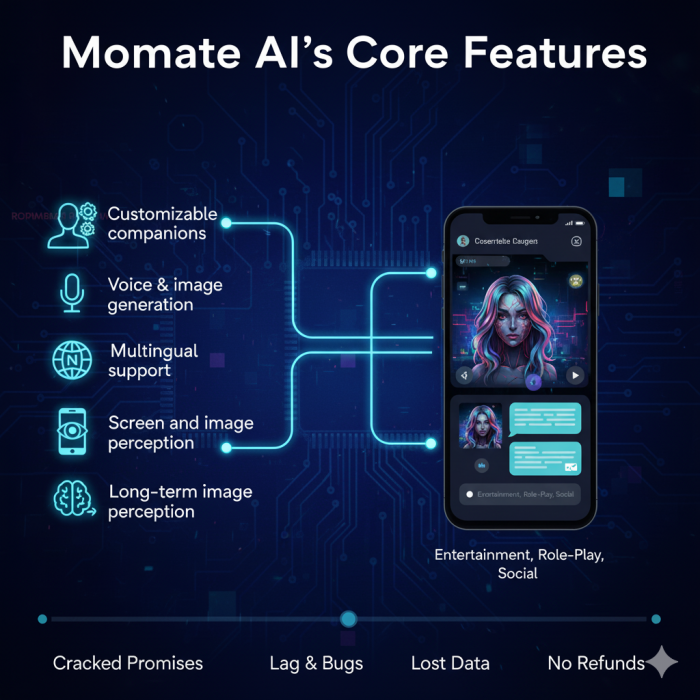
Moemate set itself apart with some ambitious tools:
🚀 Customizable companions — users could design appearance, voice, and personality.
🚀 Voice & image generation — characters could “speak” and create visuals for role-play.
🚀 Multilingual support — appealed to a global audience beyond English-speakers.
🚀 Screen and image perception — a rare feature allowing companions to respond to screenshots or visuals.
🚀 Long-term memory — carried conversations across sessions, giving users a sense of continuity.
These features positioned Moemate as a hybrid between entertainment, role-play, and social interaction.
What Worked Well
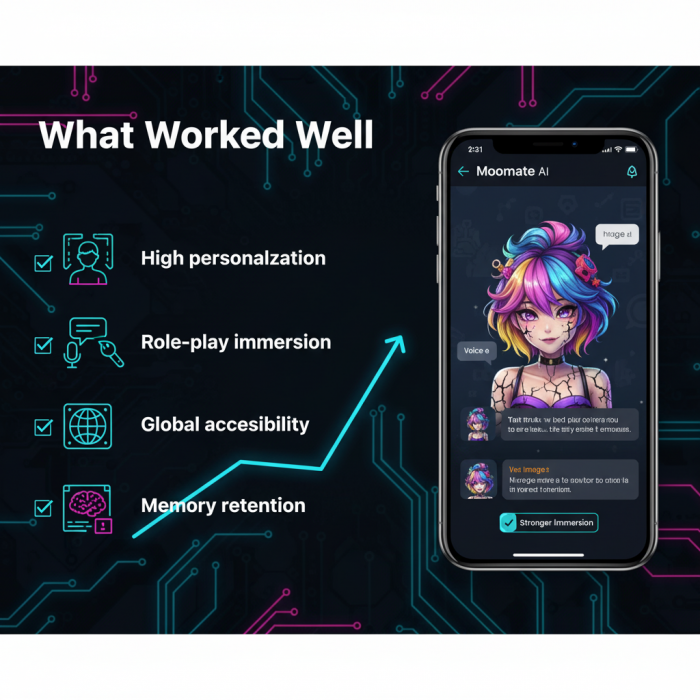
✅High personalization gave users more control over their companions.
✅Role-play immersion was stronger thanks to voice and image generation.
✅Global accessibility helped it attract non-English-speaking users early.
✅Memory retention made interactions feel less disposable.
Why Users Started Leaving
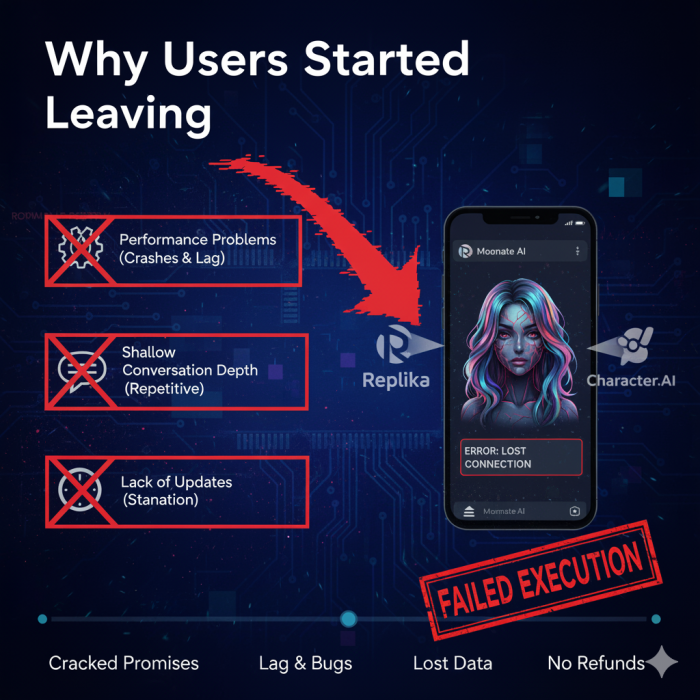
Despite its strengths, Moemate’s execution didn’t match its ambition. Users consistently flagged three issues:
👉Performance problems — frequent crashes and lag destroyed immersion.
👉Shallow conversation depth — memory existed, but the AI repeated itself and struggled with complex topics.
👉Lack of updates — while competitors kept evolving, Moemate stagnated.
The result: a platform that looked great on paper but couldn’t maintain user trust.
Moemate vs Competitors
| Feature | Moemate AI | Replika | Character.AI |
|---|---|---|---|
| Customization | Full (appearance, voice, personality) | Limited avatars & traits | Strong personality-based |
| Memory | Yes (long-term) | Yes (premium feature) | Partial, session-based |
| Role-play depth | Moderate (voice + image) | Limited, text-based | Very strong (community-driven) |
| Performance | Weak (frequent issues) | Stable | Stable with occasional lag |
| Innovation speed | Stagnant | Frequent updates | Frequent updates |
👉 The comparison shows Moemate’s ambition outpaced its stability.
The Real Reasons Behind Moemate’s Decline
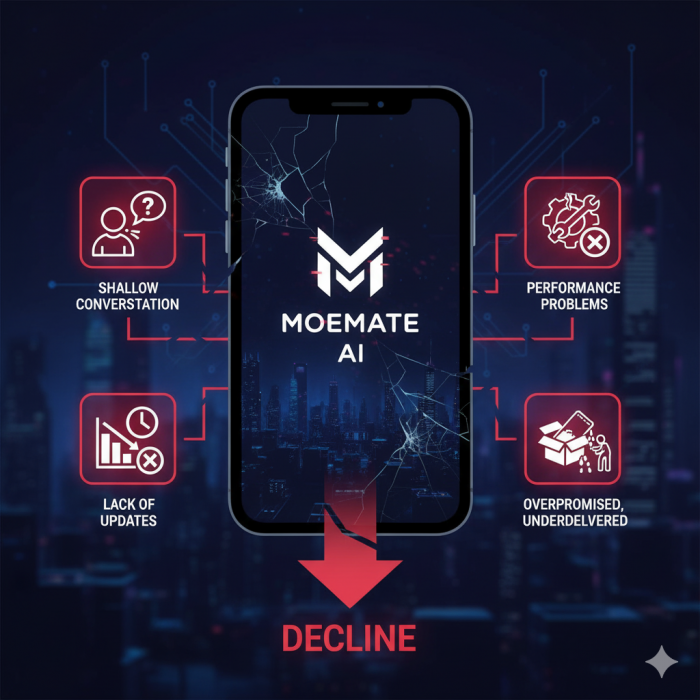
- Overpromised, underdelivered: Features like screen perception rarely worked smoothly.
- Poor prioritization: Core bugs went unfixed while new gimmicks were added.
- Weak customer support: Users often struggled to get help.
- Narrow focus: Leaned too heavily on entertainment and ignored broader use cases.
Moemate’s Post-Mortem: Lessons and Takeaways
Moemate’s story is more than a product review—it’s a case study. Here’s what stands out when looking back:
Timeline Snapshot
2023: Launch with excitement around customizable AI companions.
2024: Growth stalls; users complain about bugs and shallow conversation.
Late 2024: Competitors like Character.AI and Replika surge ahead.
Jan 2025: Refund cutoff date announced.
Feb 2025: Domain pulled, platform goes offline.
What Happened to Moemate AI — The Final Chapter
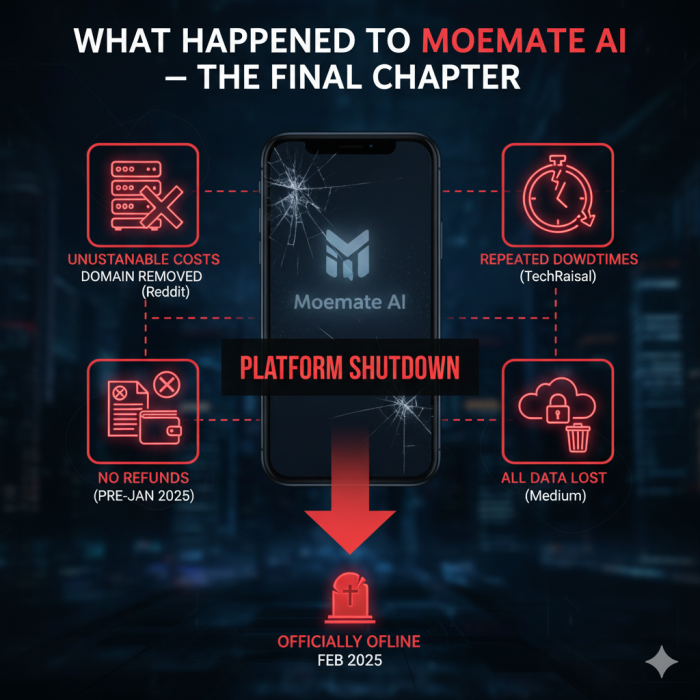
Moemate AI is no longer active. As of early 2025, the platform was officially shut down.
- Why It Went Offline
→The service’s domain was removed from DNS by its registrar.
→Developers cited unsustainable operating costs, especially infrastructure and moderation.
→Repeated downtimes and reliability failures eroded its viability.
- Impact on Users
→Only users who paid after January 3, 2025 were eligible for refunds; earlier subscribers were left out.
→All user data—companions, chats, memories—was lost with no recovery plan.
- What’s Next (or Not)
→Developers confirmed Moemate will not return in its old form. Instead, they plan to launch a new AI chatbot platform within 3–6 months.
→No name, roadmap, or demos have been released yet.
→Community sentiment remains skeptical, with many calling the shutdown abrupt and poorly managed.
Final Verdict: Moemate’s Legacy
Moemate AI showed flashes of brilliance—customization, memory, and multimedia role-play. But it failed where it mattered most: stability, depth, and trust.
Its abrupt shutdown leaves behind lessons for the next generation of AI companion platforms: ambition attracts users, but only execution keeps them.
👉 Moemate’s rise and fall isn’t just history—it’s a warning to every AI startup trying to stand out in a crowded market.


Comments